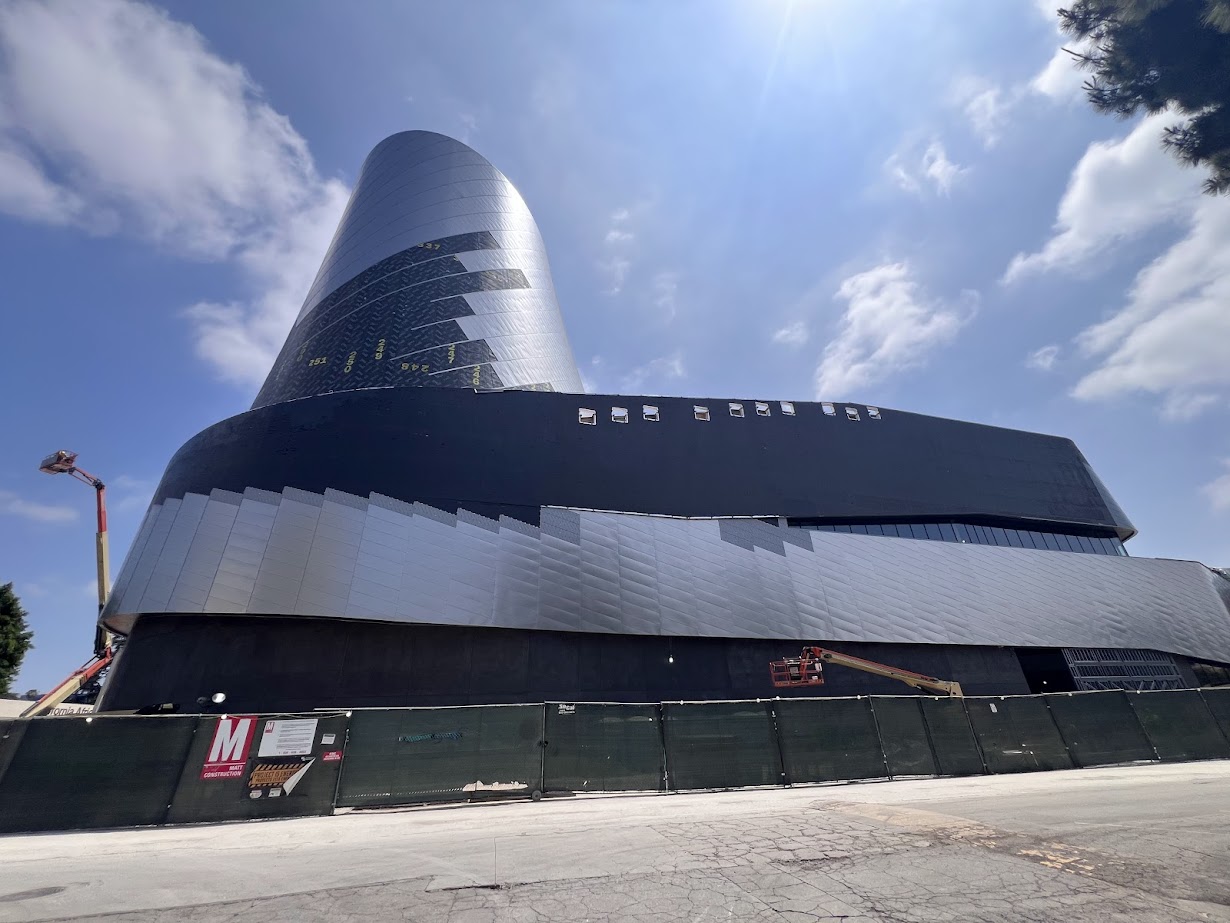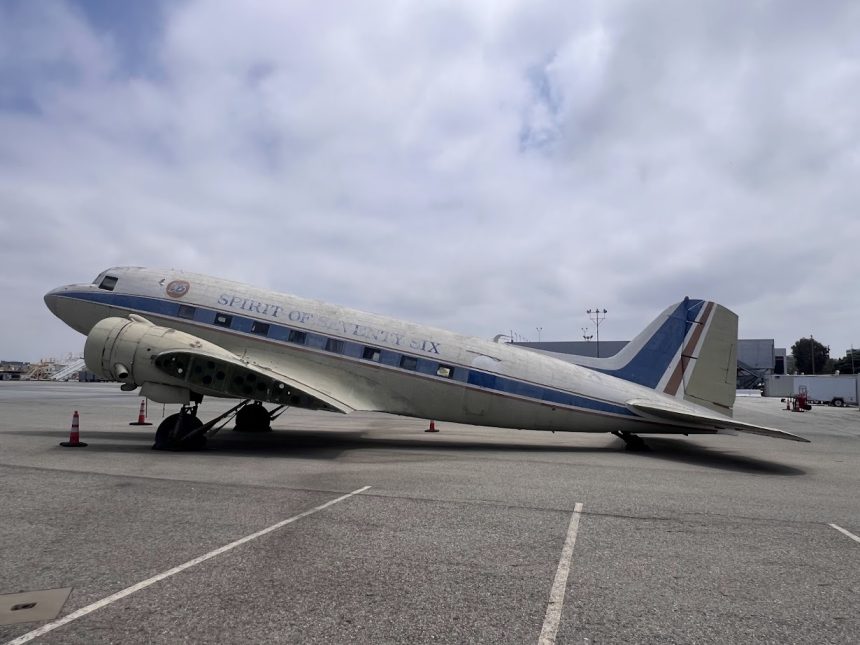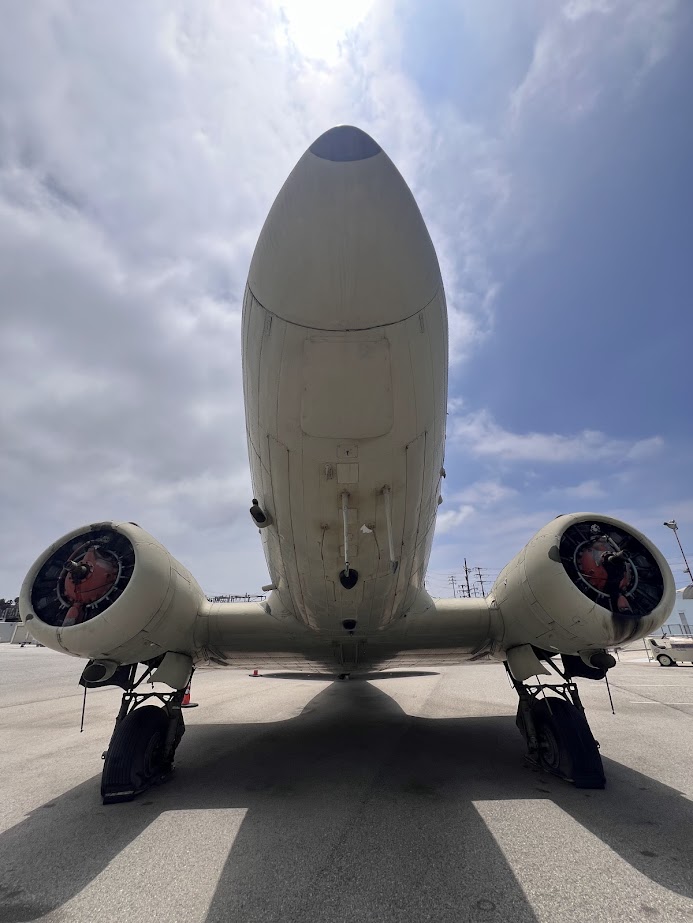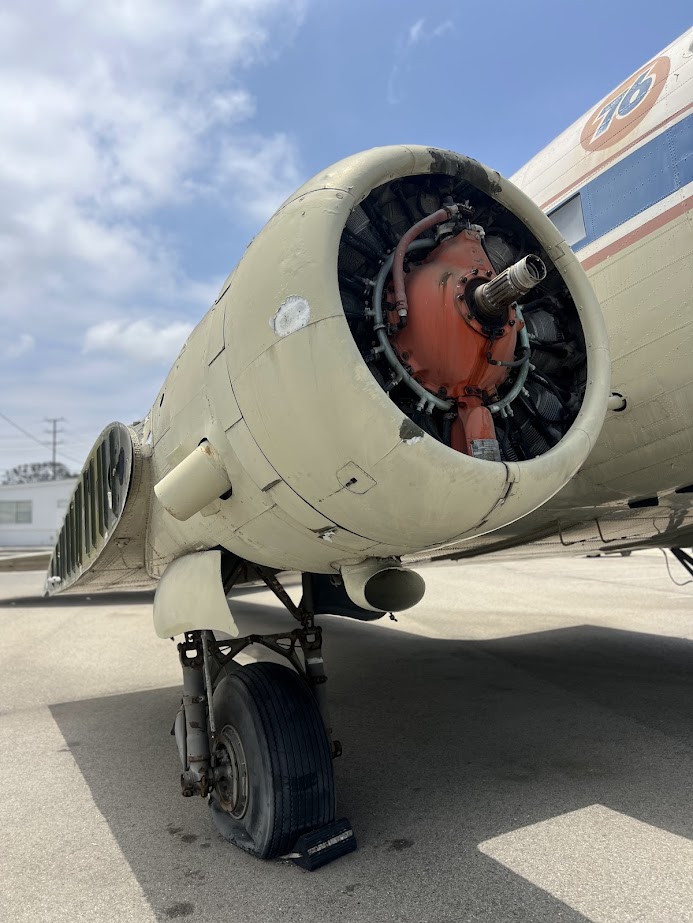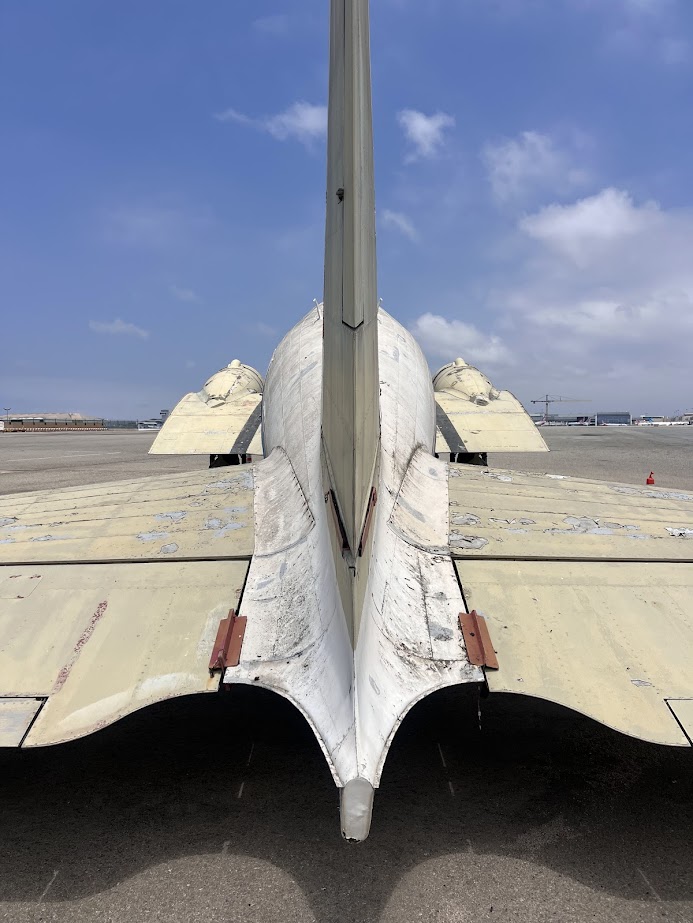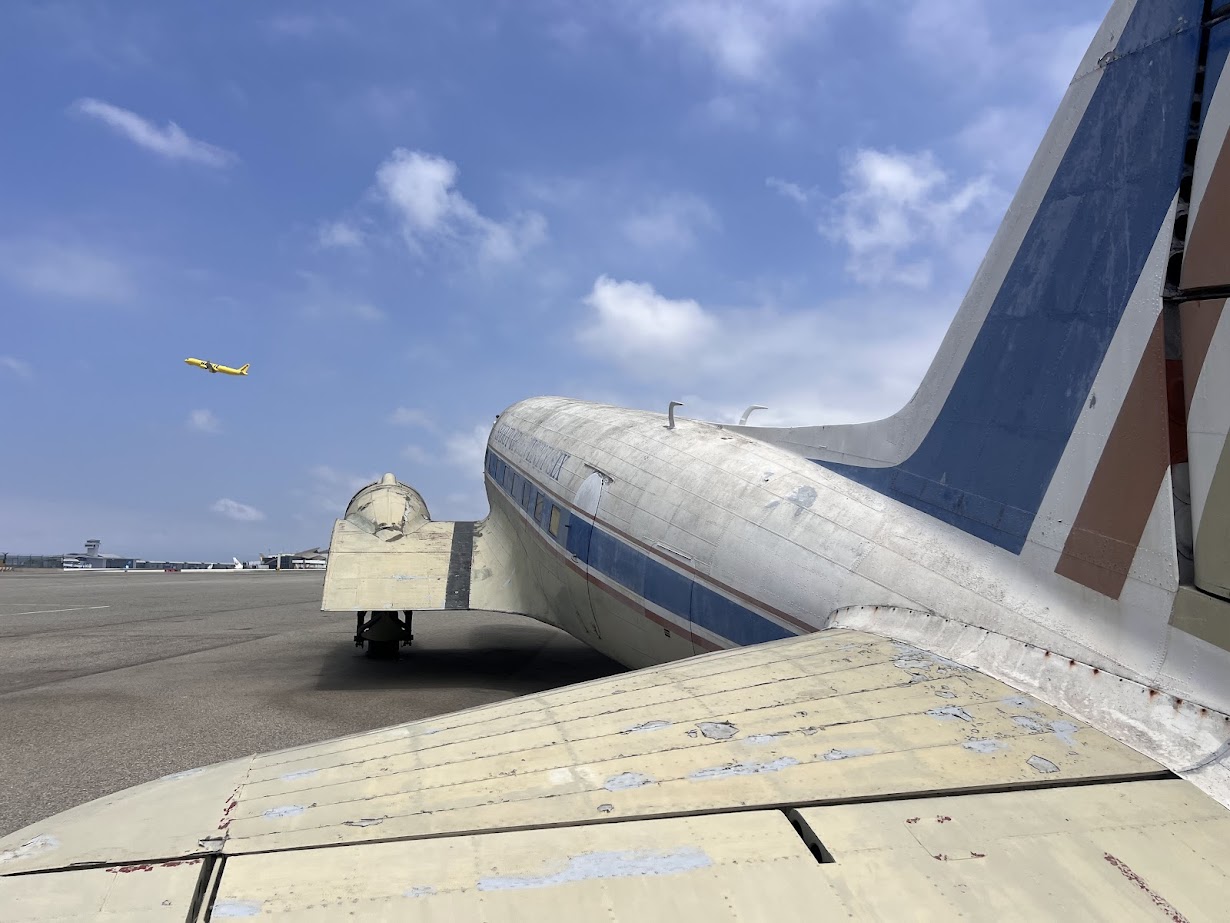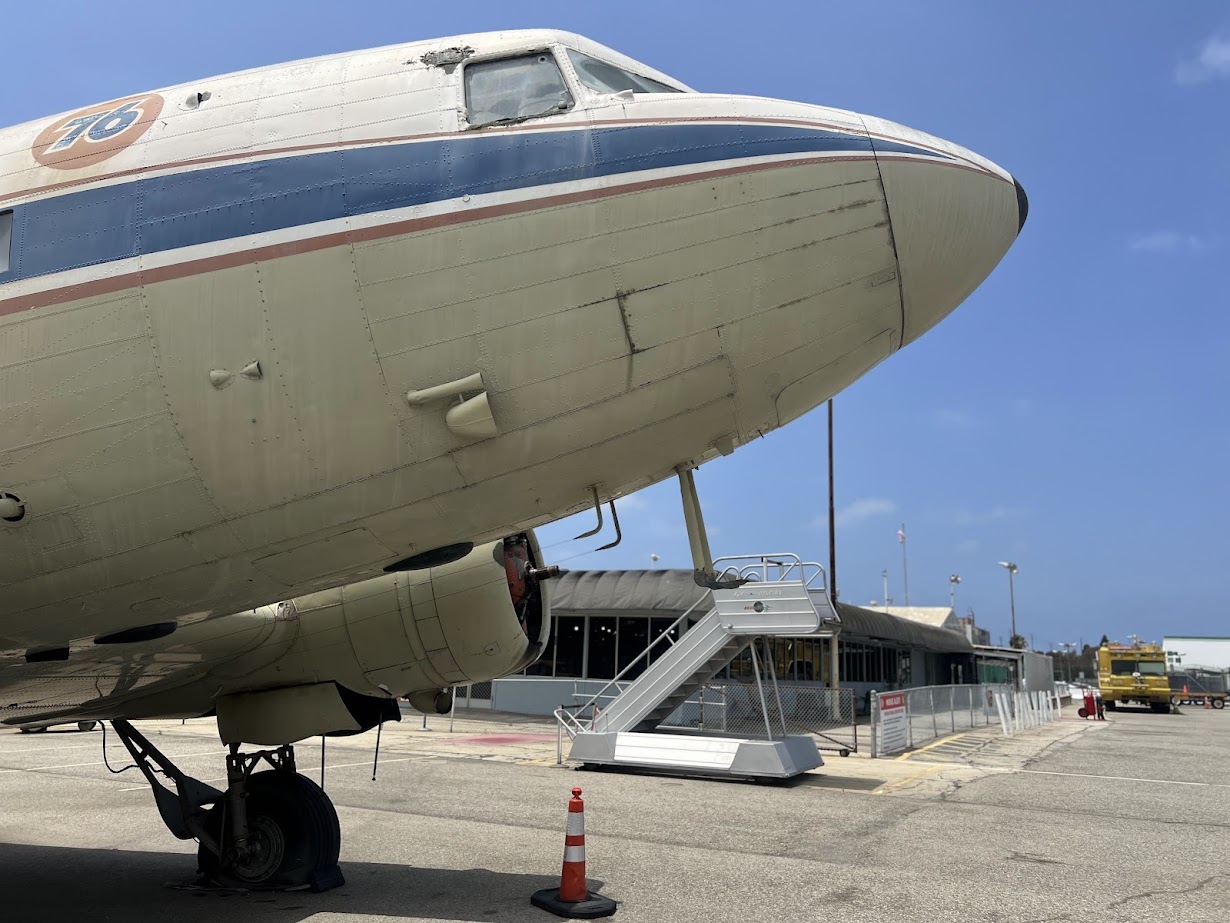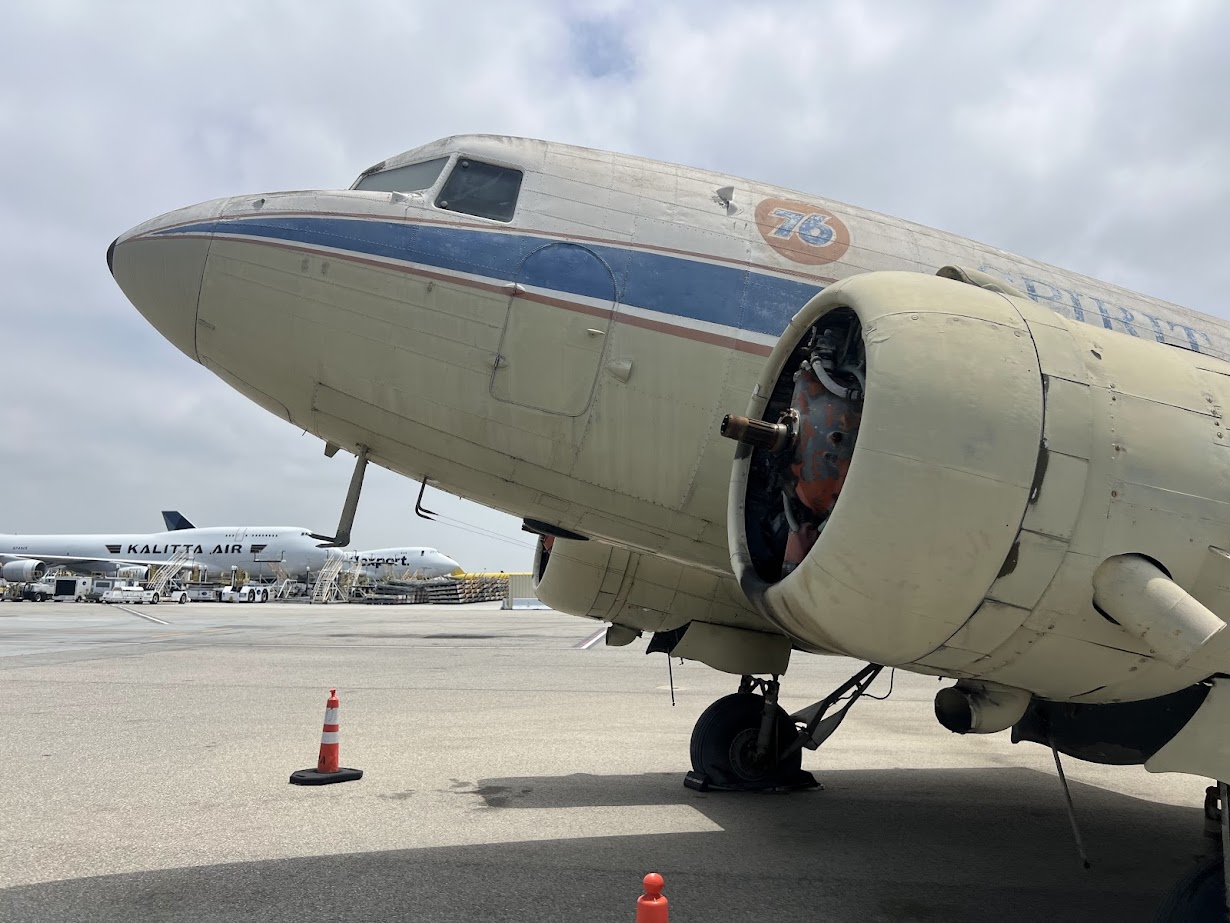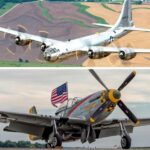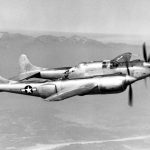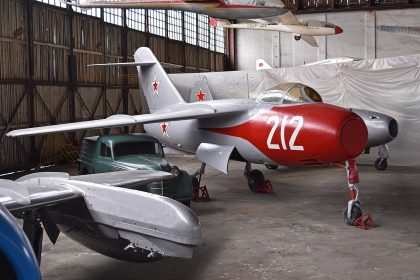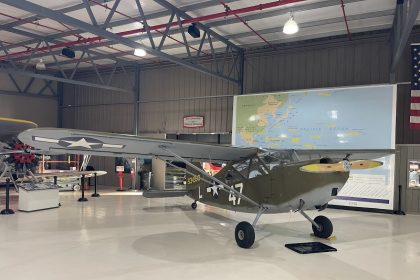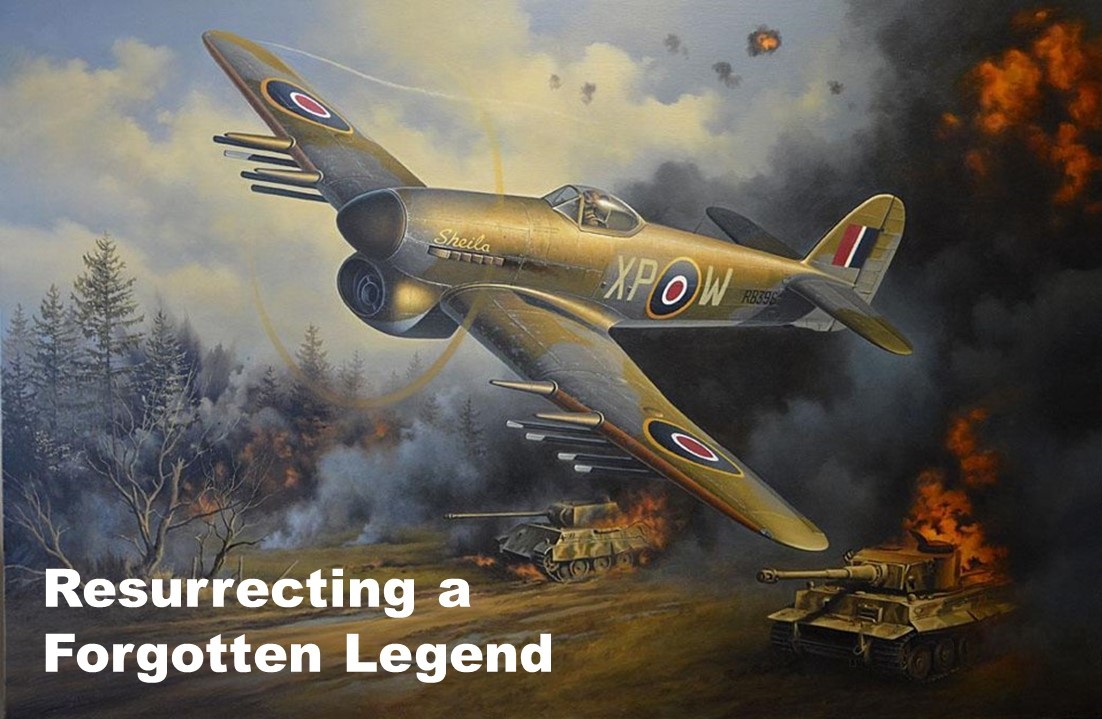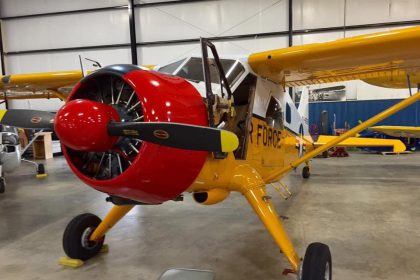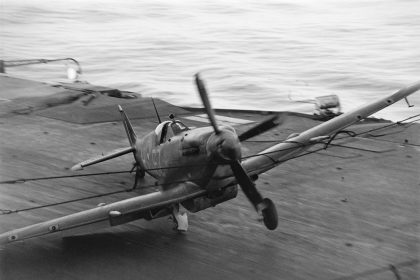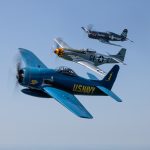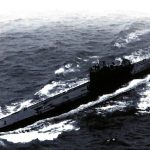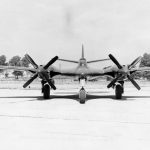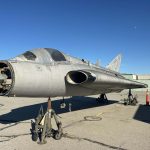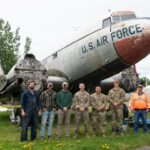For more than 15 years, a Douglas DC-3 has stood at the Flight Path Museum and Learning Center at the south end of the bustling Los Angeles International Airport on Imperial Highway while on loan from the California Science Center in Los Angeles’ Exposition Park. Far from the passenger terminals on the north side of the airport, the aircraft has nonetheless often looked small in comparison to the cargo-carrying Boeing 747s parked within a few hundred feet of the aircraft. Yet this faded DC-3, wearing the colors of the Union 76 gas company, will be making one more journey through Los Angeles that will see the aircraft return to the California Science Center and be placed on display in the upcoming Samuel Oschin Air & Space Center.
The story of this DC-3 begins at the Douglas Aircraft plant in Santa Monica, where it was built as construction number 03269. On January 26, 1941, the aircraft was delivered to Transcontinental & Western Air (later Trans World Airlines (TWA)) as NC1944. Unlike many DC-3s, NC1944 was never flown in military service, spending the Second World War in TWA’s fleet. However, airlines such as TWA still contributed to the war effort during WWII by transporting personnel and materiel across the United States and even around the world. With the end of WWII in 1945, the postwar economic boom in the United States led to an increase in the number of airline passengers, and DC-3s such as NC1944 continued to plod the skies of America. However, the late 1940s and early 1950s saw an array of new types of airliners that could fly faster, higher, and carry more passengers and cargo than the pre-war DC-3s could, but it would not be until the 1970s that the Douglas DC-3 would retire from regional carriers in the United States.
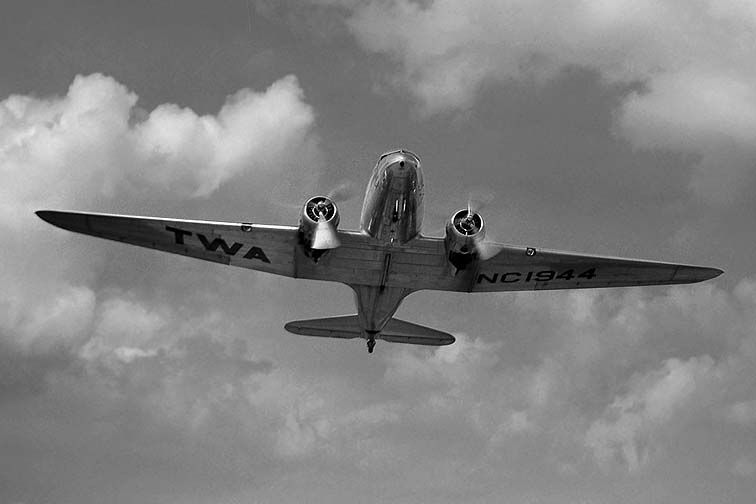
On November 3, 1950, NC1944 (now registered as N1944) was sold by TWA to aircraft broker W.G. Spillman of Burbank, CA, then sold the aircraft eleven days later on November 24 to the Union Oil Company of California, the originator of the 76 brand of gas stations that still dot the US West Coast. With the purchase of DC-3 N1944, the aircraft entered a new profession that many surplus Douglas DC-3s were being utilized for: business transport. The plane was equipped with a new interior, allowing company executives to travel in comfort while conducting business on the company’s airplane. Additionally, the company’s scientists and engineers used the aircraft to travel to various locations that offered new sources of oil and gasoline for the company to sell. On June 30, 1963, the aircraft was re-registered with the FAA as N760 and continued to be in service for Union 76.
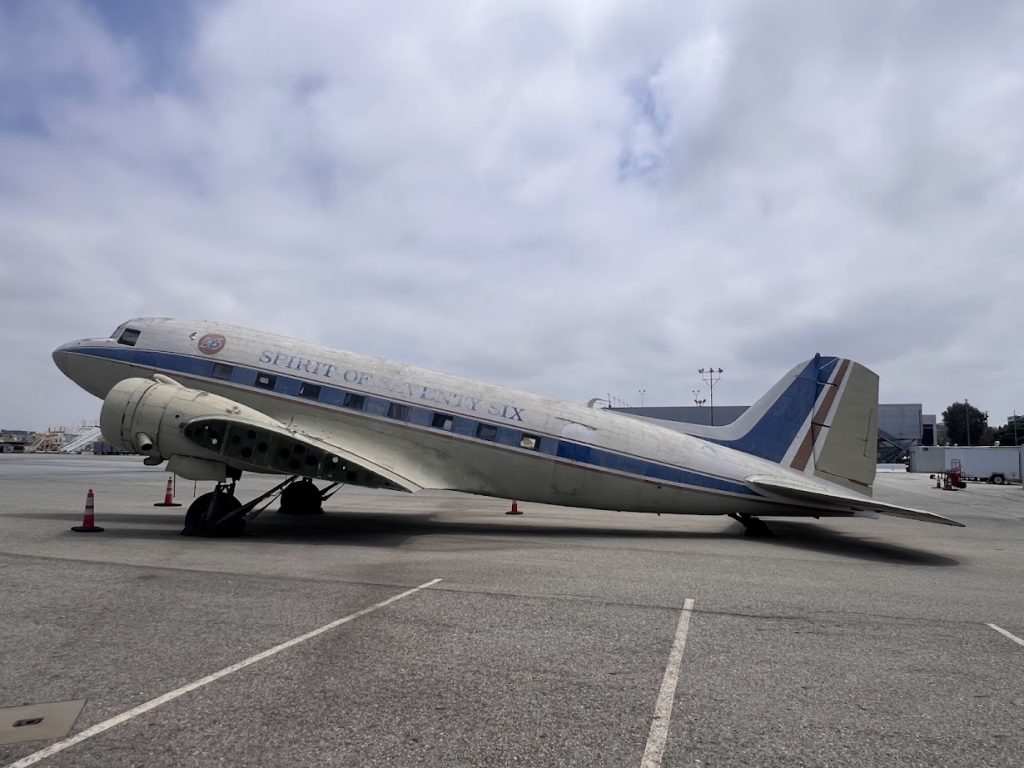
As the 1980s approached, the aircraft itself was nearly 40 years old at a time when business jets became more affordable for companies such as Union 76 to purchase or charter for their purposes. Yet, the aircraft still held historical value. On December 15, 1982, Douglas DC-3 N760 was donated to the California Museum of Science & Industry (now the California Science Center) in Los Angeles’ Exposition Park. At the time N760 was retired, it had accumulated nearly 48,000 flying hours and had flown 10 million miles without incident. Additionally, 76 also donated a fuel truck and an aircraft tug to be displayed with the DC-3, which was given the name “Spirit of Seventy-Six”. During the 1984 Summer Olympics in Los Angeles, the California Aerospace Museum was opened next to the California Museum of Science and Industry, with an emphasis on the Golden State’s role as a major contributor to the aviation industry. However, the design of the museum building was not intended to accommodate the DC-3, and so the aircraft was left outdoors in Exposition Park, exposed to the local weather.

After nearly 20 years on display at Exposition Park, Douglas DC-3 N760 was placed on loan by the newly renamed California Science Center to the Western Museum of Flight (WMOF), which was then located on the northwest corner of Hawthorne Airport. There, museum volunteers, many of whom were retirees of Northrop Aircraft (which was headquartered at Hawthorne), restored the aircraft, but a lack of hangar space prevented it from remaining outdoors. In 2006, the WMOF relocated to its present-day location at Torrance Airport/Zamperini Field. However, a lack of space at the new location necessitated the relocation of N760 to a new museum—fortunately, the Flight Path Museum and Learning Center.
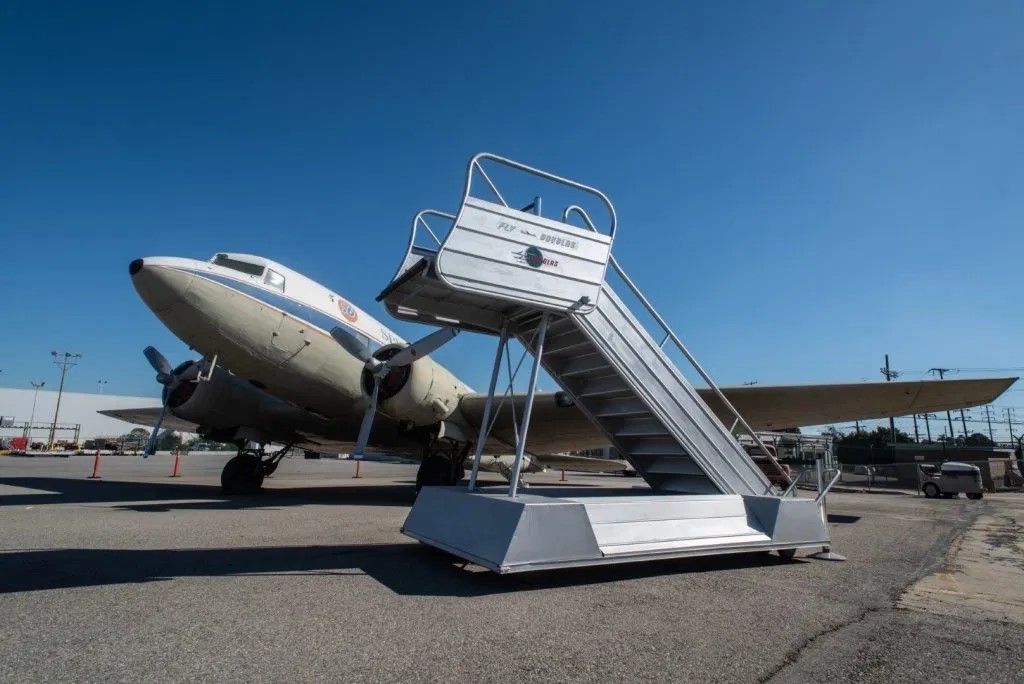
Located in the former LAX Imperial Terminal, the museum offers visitors a glimpse into Los Angeles’ aerospace history, with exhibits on the evolution of LAX from its establishment in 1928 as Mines Field to its present-day status as a worldwide hub for travel and commerce, airlines both currently active and inoperative, and local aerospace manufacturers, the Flight Path Museum prided the DC-3 as the sole aircraft on its premises, and offered guided tours of its interior to visitors until the COVID-19 pandemic caused the interior tours to cease. By that point, however, the exterior of the aircraft began to show its age yet again, and around this time, the California Science Center began finalizing the design work on the upcoming Samuel Oschin Air and Space Center.
While the centerpiece of the new Air and Space Center will be the Space Shuttle Endeavour, which was flown into Los Angeles in September 2012 and driven from LAX to Exposition Park in October 2012, the new Air and Space Center, named for local philanthropist Samuel Oschin, will also feature a number of aircraft in the new Korean Air Aviation Gallery, from the nose section of a former Korean Air Boeing 747-400 to the world’s oldest surviving Grumman F-11 Tiger and the first production model Northrop T-38 Talon (itself previously loaned to the Western Museum of Flight in Torrance).
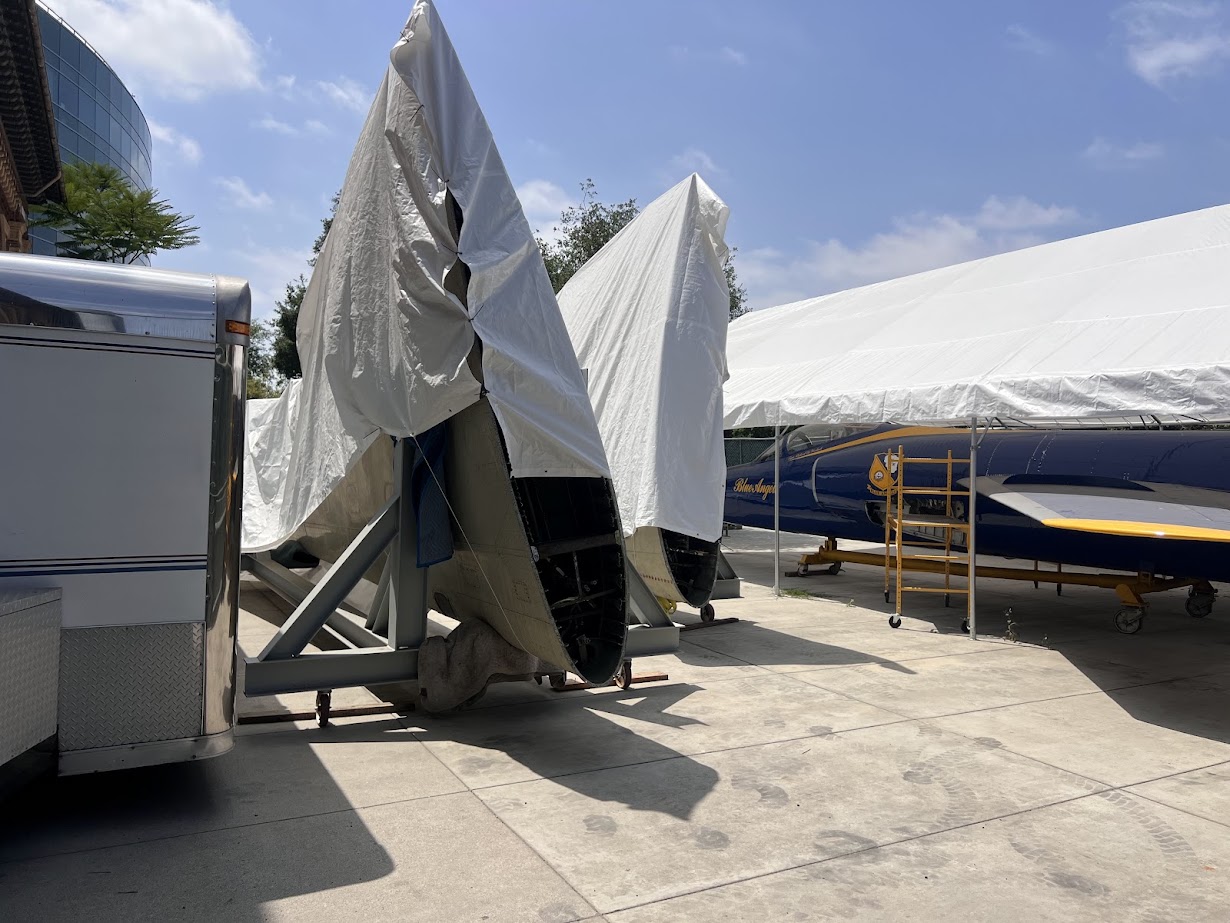
So far, the outer wings, ailerons, and propellers of DC-3 N760 have been shipped to the California Science Center, where they will undergo refurbishment alongside the Tiger and the Talon, while the fuselage remains at the Flight Path Museum and Learning Center. Efforts are underway to transport the remainder of the DC-3, which includes the aircraft’s engines, tail, center wing section, and landing gear, from LAX to Exposition Park, but the California Science Center is still coordinating between the contractors and the California Highway Patrol (CHP) and Los Angeles Police Department (LAPD) to facilitate the safe journey of the aircraft. Once all sections of the DC-3 return to the California Science Center, DC-3 N760 will be refurbished once again and placed on display inside the new Air and Space Center. As of writing, the CSC has yet to announce an opening date for the new addition, but major sporting events such as the 2026 FIFA World Cup, 2027 Super Bowl LXI, and the 2028 Summer Olympics/Summer Paralympics, and the fact that construction is well underway, it may not be long before the Samuel Oschin Air and Space Center is officially open to the public. The Douglas DC-3 N760 will have a permanent place in what promises to be the largest air and space museum in Los Angeles. Meanwhile, volunteers at the Flight Path Museum and Learning Center are eager to find a new airplane to take the DC-3’s place.
